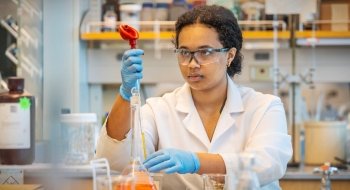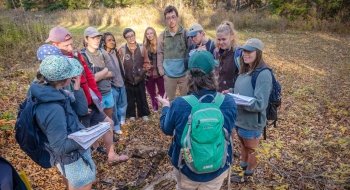A grant from the National Science Foundation will allow St. Lawrence to purchase a new, 400 MHZ nuclear magnetic resonance spectrometer (NMR instrument) to be used by students and faculty in chemistry, biology, physics, and environmental studies.
The $288,990 grant will replace a 20-year-old 300 MHZ NMR that has been widely used throughout the sciences. The new NMR includes upgraded hardware and user interface, but more importantly, the increased sensitivity will significantly improve the quality of data collection.
The grant proposal was led by Associate Professor of Chemistry Adam Hill, as well as Assistant Professors of Chemistry Samuel Tartakoff and Amanda Oldacre. In total, the effort included nine St. Lawrence faculty, as well as three external users at SUNY Potsdam and SUNY Canton.
This instrument is requested to significantly expand and improve both research and research training activities.
"This allows us to look at chemicals on a molecular level and understand how reactions affect them," Tartakoff said. "It will enable collaborations and allow more students to get hands-on experience running cutting edge instrumentation."
The proposal outlines research in areas including chemotherapeutic drugs, DNA structure, catalyst design, microplastic pollution, naturally occurring antioxidants, and more. While individual molecules are much too small to observe with even the most powerful light-microscopes, the NMR uses radio waves and a superconducting magnet to identify molecular shapes and atomic bonds, similar to MRI medical imaging of the brain.
"It will be used primarily for research and in advanced lab classes, but having the newer equipment will also mean that we will be using it in sophomore-level organic chemistry classes," said Tartakoff.
The grant proposal also states that "acquisition of the NMR spectrometer will strengthen not only faculty research portfolios, but also enhance faculty’s capacity to mentor and train dozens of students over the grant term. Additionally, SLU will make the NMR available to collaborators and other local researchers in northern New York, an economically disadvantaged, rural area."
The new equipment is currently scheduled to arrive in December in order to be available for use starting in the Spring 2021 semester.



